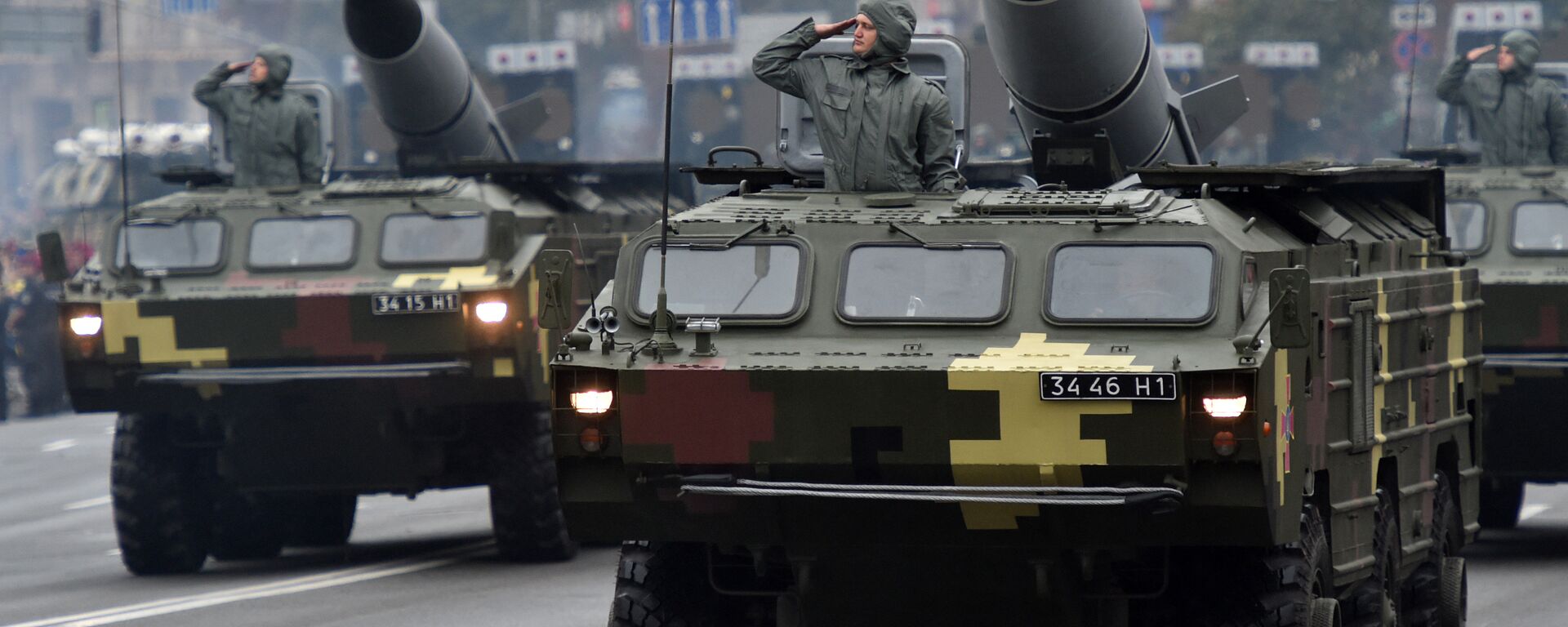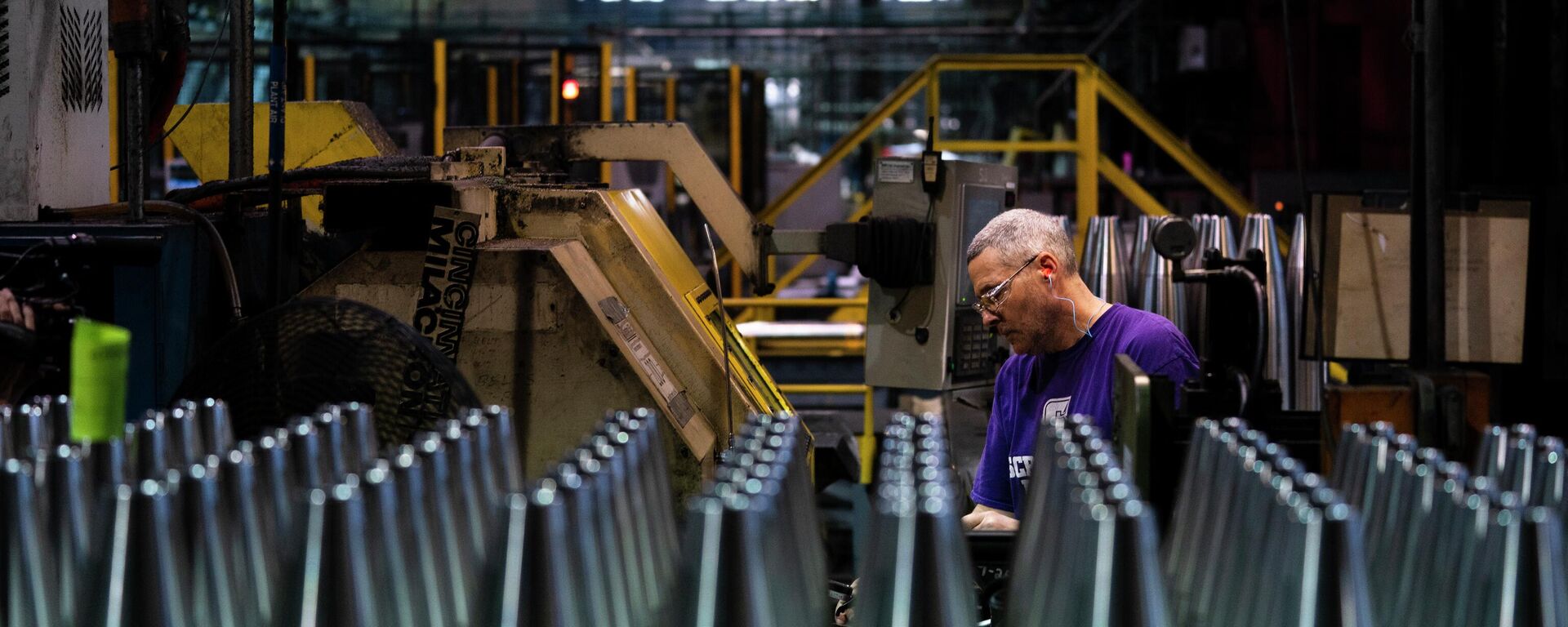https://sputnikglobe.com/20231110/why-ukraines-neptune-missiles-arent-the-wunderwaffe-kiev-dreams-of-1114869139.html
Why Ukraine's Neptune Missiles Aren't the Wunderwaffe Kiev Dreams of
Why Ukraine's Neptune Missiles Aren't the Wunderwaffe Kiev Dreams of
Sputnik International
The Russian military downed a Ukrainian-made Neptune anti-ship missile off the coast of the Crimean peninsula this week. What are the Neptunes and how many does Ukraine have?
2023-11-10T15:11+0000
2023-11-10T15:11+0000
2023-11-10T15:11+0000
ukraine
russia's special operation in ukraine
valery zaluzhny
volodymyr zelensky
neptune
russia
ministry of defense
buk-m2
buk-m3
s-400 triumph
https://cdn1.img.sputnikglobe.com/img/07e7/0a/16/1114403963_0:161:3071:1888_1920x0_80_0_0_047937182a6b96977796e308586c2893.jpg
Russia's air defenses detected and intercepted the Ukrainian R-360 Neptune rocket heading towards Crimea over the Black Sea yesterday, as per Russia's Ministry of Defense. Earlier, a similar anti-ship missile was downed by the Russian military on August 29.Ukrainians are said to have modified the missile in 2023 to support land-attack roles, while in late August some Ukrainian media and X users claimed that it had allegedly hit Russia's S-400 Triumph air defense system in Crimea. However, the purported video "evidence" of the strike was quickly debunked by military experts.Last year, Ukraine claimed two Neptunes had been used to hit the Russian missile cruiser Moskva. Admitting Ukraine's sabotage attack, the Russian military cast doubt on the Neptune version, citing the fact that the warship sustained damages mostly due to the detonation of the ammo caused by the fire. So, what is Ukraine's Neptune "wonder-weapon"?Koshkin pointed out that the Neptune's maximum range is about 280 kilometers. Per him, the most important thing is that "it flies at the final stage at an altitude of 3 to 10 meters" which "greatly increases its survivability." At the same time, when the missile's sustainer engines are working, its altitude is about 300 meters making it vulnerable to air defense systems, he added."Our [Rusian] air defense systems are quite well configured [to intercept these missiles]. And complexes like S-300, S-400 are able to shoot [the Neptune] down, even Buk-M2 and Buk-M3 work against these targets, naturally, very effectively," Koshkin emphasized.Why Ukraine Can't Mass Produce NeptunesEven though the Ukrainian and Western media have been touting the missile as a potent weapon against Russia, suggesting that it could be used against long-distant targets, such as Moscow, it's nothing more than a PR stunt, according to the retired colonel.First, no matter how well the rocket is modified it is still a thing of the past, he noted. Second, Ukraine does not have enough production facilities to mass manufacture these missiles.Ukraine does have enough economic potential while its defense industrial enterprises are in a bad shape, the expert explained. Still, a lot of time, funds and effort are needed to kick-start a mass production of the innovative weapons, he emphasized.Ukraine May Have Ten or Less Neptunes It's unlikely that Ukraine possesses a large number of Neptunes, according to Koshkin: "We can assume that they probably have one complex in a standard structure, including six launchers and a command post, transport vehicles, loading vehicles." According to his estimates, Ukraine may presently have up to ten Neptune missiles or even less.The retired colonel expects that the rockets will be used to attack Russia's infrastructural assets, defense enterprises, maybe some processing plants, in order to gain as much PR effect as possible. Per him, this "PR product" would be used both domestically and abroad.The US and European leaders have recently shifted their focus to the Middle East, leaving the Kiev regime on the back burner. Remarkably, the tone of leading Western mainstream publications in describing Ukraine affairs has also changed, with the Economist publishing an extensive interview, op-ed and essay by Ukrainian Army Commander-in-Chief Valery Zaluzhny, who bluntly stated that there would be no "breakthrough" in the near term. For his part, Ukrainian President Volodymyr Zelensky is insisting on the necessity to continue the fight, being depicted by Time magazine as delusional. Under these conditions, the Kiev regime's new terror attacks, akin to its previous strikes on the Crimea Bridge, residential areas and civilian infrastructure, are likely, per international experts.
https://sputnikglobe.com/20230828/why-ukraines-military-production-is-an-illusion-1112949790.html
https://sputnikglobe.com/20231104/ukrainian-top-generals-delusional-demands-amount-to-asking-nato-for-wunderwaffe-1114727817.html
https://sputnikglobe.com/20231109/ex-cia-analyst-west-preparing-for-military-coup-against-zelensky-1114845253.html
ukraine
neptune
russia
Sputnik International
feedback@sputniknews.com
+74956456601
MIA „Rossiya Segodnya“
2023
News
en_EN
Sputnik International
feedback@sputniknews.com
+74956456601
MIA „Rossiya Segodnya“
Sputnik International
feedback@sputniknews.com
+74956456601
MIA „Rossiya Segodnya“
ukraine conflict, ukraine war, ukraine war map, ukraine war news, volodymyr zelensky, neptune missiles, russian warship moskva, s-400 triumph, s-400 triumf, valery zaluzhny, ukrainian failed counteroffensive, ukraine fatigue
ukraine conflict, ukraine war, ukraine war map, ukraine war news, volodymyr zelensky, neptune missiles, russian warship moskva, s-400 triumph, s-400 triumf, valery zaluzhny, ukrainian failed counteroffensive, ukraine fatigue
Why Ukraine's Neptune Missiles Aren't the Wunderwaffe Kiev Dreams of
The Russian military downed a Ukrainian-made Neptune anti-ship missile off the coast of the Crimean peninsula this week. What are the Neptunes and how many does Ukraine have?
Russia's air defenses detected and intercepted
the Ukrainian R-360 Neptune rocket heading towards Crimea over the Black Sea yesterday, as per Russia's Ministry of Defense. Earlier, a similar anti-ship missile
was downed by the Russian military on August 29.
Ukrainians are said to have modified the missile in 2023 to support land-attack roles, while in late August some Ukrainian media and X users claimed that it had allegedly hit Russia's S-400 Triumph air defense system in Crimea. However, the purported video "evidence" of the strike was quickly debunked by military experts.
Last year, Ukraine claimed two Neptunes had been used to hit
the Russian missile cruiser Moskva. Admitting Ukraine's sabotage attack, the Russian military cast doubt on the Neptune version, citing the fact that the warship sustained damages mostly due to the detonation of the ammo caused by the fire. So, what is Ukraine's Neptune "wonder-weapon"?
"The R360 Neptune is a Ukrainian subsonic low-altitude anti-ship missile," Andrey Koshkin, retired colonel and expert at the Association of Military Political Scientists, told Sputnik. "And, of course, it is designed to destroy ships with a displacement of up to 5000 tons, as well as ground targets. It was developed a very long time ago; it was created on the basis of the Soviet X-35 rocket. And naturally, a lot of time passed. Somewhere in 2014, after the February [coup] events, they began to work on this rocket quite thoroughly. This missile was adopted into service in Ukraine some time in 2020."
Koshkin pointed out that the Neptune's maximum range is about 280 kilometers. Per him, the most important thing is that "it flies at the final stage at an altitude of 3 to 10 meters" which "greatly increases its survivability." At the same time, when the missile's sustainer engines are working, its altitude is about 300 meters making it vulnerable to air defense systems, he added.
"Our [Rusian] air defense systems are quite well configured [to intercept these missiles]. And complexes like S-300, S-400 are able to shoot [the Neptune] down, even Buk-M2 and Buk-M3 work against these targets, naturally, very effectively," Koshkin emphasized.
Why Ukraine Can't Mass Produce Neptunes
Even though the Ukrainian and Western media have been touting the missile as a potent weapon against Russia, suggesting that it could be used against long-distant targets, such as Moscow, it's nothing more than a PR stunt, according to the retired colonel.
First, no matter how well the rocket is modified it is still a thing of the past, he noted. Second, Ukraine does not have enough production facilities to mass manufacture these missiles.
Ukraine does have enough economic potential while its defense industrial enterprises are in a bad shape, the expert explained. Still, a lot of time, funds and effort are needed to kick-start a mass production of the innovative weapons, he emphasized.
"Secondly, the crux of the matter is that [the Russian military] is constantly conducting objective technical reconnaissance. We identify all the bases and centers meant for the creation of some kind of weapons or modernization, and destroy them. So, Ukraine doesn't have an opportunity to calmly launch production, bring together appropriate specialists and appropriate resources in order to prepare and manufacture [the rockets]."

4 November 2023, 17:23 GMT
Ukraine May Have Ten or Less Neptunes
It's unlikely that Ukraine possesses a large number of Neptunes, according to Koshkin: "We can assume that they probably have one complex in a standard structure, including six launchers and a command post, transport vehicles, loading vehicles." According to his estimates, Ukraine may presently have up to ten Neptune missiles or even less.
"Most likely, [these missiles] are preserves for certain purposes associated with certain terrorist acts," the expert suggested. "That is, they are likely to launch this missile one at a time, but for sure, and hit some extremely important target on our territory. This is probably the purpose for which they will try to use these missiles – if they still exist – in the future."
The retired colonel expects that the rockets will be used to attack Russia's infrastructural assets, defense enterprises, maybe some processing plants, in order to gain as much PR effect as possible. Per him, this "PR product" would be used both domestically and abroad.
Ukraine appears to be "in need" of "new victories" given the fact that its much-anticipated counteroffensive has failed and the "Ukraine fatigue" trend has become obvious, especially against the backdrop of the unfolding Israel-Hamas war.
The US and European leaders have recently shifted their focus to the Middle East, leaving the Kiev regime on the back burner. Remarkably, the tone of leading Western mainstream publications in describing Ukraine affairs has also changed, with the Economist publishing an extensive interview, op-ed and essay by Ukrainian Army Commander-in-Chief Valery Zaluzhny, who bluntly stated that
there would be no "breakthrough" in the near term.
For his part, Ukrainian President Volodymyr Zelensky is insisting on the necessity to continue the fight, being depicted by Time magazine
as delusional. Under these conditions, the Kiev regime's new terror attacks, akin to its previous strikes on the Crimea Bridge, residential areas and civilian infrastructure, are likely, per international experts.

9 November 2023, 14:29 GMT





